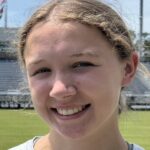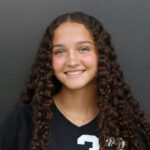U.S. Soccer Development Academy scouting director Tony Lepore expands on decision to add U-13/14 age group
By Jimmy LaRoue
The director of scouting for U.S. Soccer’s Development Academy calls the decision to add an Under-13/14 division in the fall of 2013 a crucial next step in the long-term investment in elite youth soccer players.
“I think the big benefit will be the increased hours in the training environment,” Tony Lepore said during a conference call Friday morning.
He said players would benefit by training four times per week in a top environment while playing more meaningful games. Alongside that, having the U-13/14 players, he said “shift[s] the focus on development ahead of results,” which will allow for advancing players’ technical development.
Also, he said it would be unlikely that the players in the new division would participate in a postseason format the way the U-16 and U-18 division teams do now.
“We know that the league needs to be competitive, because that’s part of any good league, playing meaningful games,” Lepore said. “But at the same time, we know that we want clubs to put development ahead of results. And we also want to be careful about the showcase model. Right now, we’re leaning toward not having a national championship because we want to regionalize everything, including their travel.”
Not only will academy teams participate in the new U-14 division, but U.S. Soccer also plans to invite non-academy clubs into the structure to provide geographical balance and limit the travel of academy teams in order to cut travel costs for the clubs. He said a process would be in place by this winter to select those clubs.
“Bringing clubs from outside the current structure–there’s three parts to that for us,” Lepore said. “The first one is, we want to spread the philosophy of the academy–the principles and the approach to player development. We want to also fill in some travel gaps. … and then the other piece is we want to cast a wider scouting net. The Development Academy has always been an extension of our youth national team programming.”
He said the current match schedule for the U-16s and U-18s doesn’t fit for the U-14 level.
He said that after five years of the Development Academy, “we know what it takes to be an academy-standard club,” and noted that in some markets, it won’t seek to expand so that the competition is not diluted.
He said the academy’s nine full time technical advisors know the academy and non-academy teams in their respective areas well and will be looking at the quality of the club’s coaching, the club’s philosophy, a history of player development–putting players in the various national teams–as well as the quality and availability of facilities, and the club’s funding model.
Currently, Lepore estimates that 23 to 25 of the academy clubs don’t charge their players to participate in the academy program, but that still leaves about 55 clubs charging their players on some level to participate in their academy programs. Two more clubs have eliminated “pay to play” this year, including the Richmond Kickers. It costs an estimated $20,000 over a four-year period to fund an academy player.
“We’ve seen progress, but we have a long way to go,” Lepore said.
With all academy teams moving to a 10-month season this year after having it on a limited basis for some teams last season, Lepore acknowledged the tough decisions that many players faced. However, he said for players trying to play in college, professionally or on the national team level, playing under the academy structure affords player more training with fewer, but more meaningful games.
The 10-month season will apply to the new U-14 division, and like the older players, the younger group will play exclusively for their academy teams or in the national team. He said they are working with clubs to find friendlies to play during gaps in the schedule and would encourage them to play in international events and tournaments like the Dallas Cup and Disney Showcase.
Lepore also said it would likely build in a longer winter break period for those teams while implementing a futsal program during that time.
U.S. Soccer is not keeping track of the number of players who left academy teams, Lepore said. Clubs are required to maintain a minimum of 36 full time players, combined, for its U-16 and U-18 teams. He did note that some players who attend private schools have received waivers to continue playing for their private school teams. That will continue on a case-by-case basis.
He believes having players make the decision on whether to play for an academy team will take some pressure off, since the U-13/14 age group would just be entering high school, and they won’t face the social pressure to continue playing for a school team.
By winter, they’ll have a good idea on the process to admit new clubs, he said, while he expects the process to be more or less seamless for current academy clubs.
Facilitating the 10-month season for all its clubs, academy staff held town hall-style meetings with them, and had talks with “high school constituents in key areas” and worked closely with the clubs.
“The full time staff and technical advisors have been working really closely with all of their clubs and everyone’s challenges are a little bit different,” Lepore said. “The schedule is a big piece of that too. We’ve worked closely with our clubs to come up with the best schedule.”
SOCCERWIRE MARKETPLACE
- Wanted Licensed Youth Soccer Coach
- Join Official Elite Summer Soccer Camps with Europe’s Top Pro Clubs!
- The St. James FC Travel Staff Coach - North (Loudoun) & South (Fairfax)
- The St. James FC Girls Academy (GA) Head Coach - 2 teams
- The St James FC Boys Travel Tryouts
- OFFICIAL BAYERN MUNICH SUMMER CAMPS U.S.
- JOIN THE ALLIANCE!
- OFFICIAL FC BARCELONA CAMPS U.S.
- The Cup San Diego - Hosted by Legends FC
- Players Wanted - Undergraduate or Post-graduate
College Recruiting Commitment Tracker
Featured Players
COLLEGE RECRUITING STARTS HERE
Join the SoccerWire College Soccer Recruiting Search Engine and learn how to be seen OVER 1 MILLION TIMES PER YEAR.
- Basic $99 – for life
- Featured $299 – for life
- Featured PLUS $399 – for life











